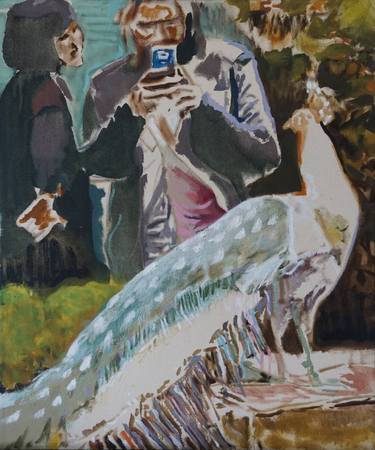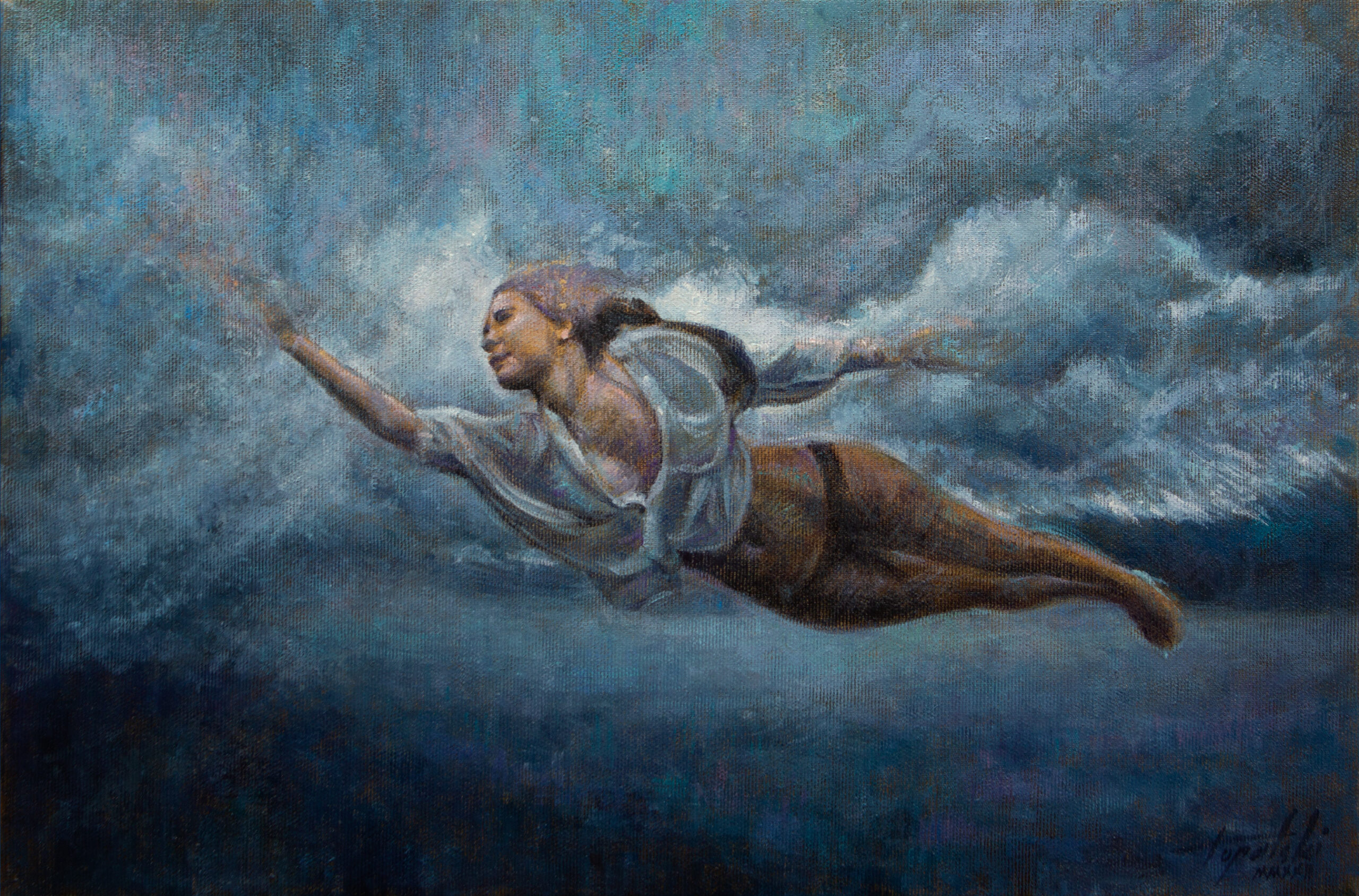How Figurative Oil Painting Transforms Conventional Artistic Expression
How Figurative Oil Painting Transforms Conventional Artistic Expression
Blog Article
The Evolution of Figurative Oil Painting: Understanding Its Historical Relevance and Modern Interpretations
The advancement of metaphorical oil painting serves as an engaging lens with which to take a look at the interplay between imaginative expression and historic context. From the careful naturalism of the Renaissance to the stirring power of the Baroque, each era has contributed layers of significance and strategy to this classic medium. Contemporary musicians, attracting from this abundant heritage, are currently reinterpreting the human number in ways that challenge conventional narratives. As we discover these makeovers, one need to consider how the dialogue in between previous and present informs not only creative practice but additionally social representations in a significantly intricate world.
Beginnings of Metaphorical Oil Painting
The origins of figurative oil painting can be traced back to the very early Renaissance in Europe, especially in the 15th century. This duration marked a considerable departure from the inflexible kinds and level representations characteristic of medieval art. Musicians started to discover naturalism, emphasizing the human figure and its emotional expression. The advancement of oil paint enabled greater depth of shade and detail, enhancing the realism and vibrancy of their work.

In this transformative era, figures were often depicted within contextually rich settings, showcasing not just their physical features but also their psychological states. Leaders such as Jan van Eyck and Titian harnessed the medium's convenience, using layering strategies to achieve luminosity and structure. This innovation facilitated the representation of detailed fabrics and the subtleties of complexion, adding to the development of portrait and narrative scenes.
Furthermore, the Renaissance focus on humanism promoted a recognition for individualism, which in turn affected musicians to produce more dynamic and relatable numbers - figurative oil painting. As an outcome, figurative oil paint became an effective car for narration and emotional involvement, laying the foundation for future creative activities and designs
Trick Historical Movements
Significant historic motions have formed the advancement of metaphorical oil paint, each adding one-of-a-kind approaches and strategies that expanded the tool's opportunities. The Renaissance noted a crucial minute, highlighting realistic look and the human form, with musicians like Leonardo da Vinci and Michelangelo pushing the borders of anatomical accuracy and point of view. Following this, the Baroque era brought dramatic contrasts of light and darkness, exemplified by Caravaggio, who infused spiritual styles with extreme emotionality.
The 19th century introduced Romanticism and Realism, where musicians such as Delacroix and Courbet tested timeless perfects, concentrating on individual expression and day-to-day life. The development of Impressionism further transformed the tool by stressing the effects of light and color, leading to a departure from standard representation.
In the early 20th century, activities like Expressionism and Cubism redefined figurative paint with abstraction and the expedition of emotional deepness. Each of these activities not only mirrored the social modifications of their times however additionally laid the foundation for modern interpretations. The interaction between these historic movements has actually created a rich tapestry of philosophies and styles, influencing contemporary musicians in their pursuit of recording the human experience on canvas.
Techniques and Materials Development

Throughout the Baroque duration, methods such as chiaroscuro and sfumato emerged, enhancing the emotional resonance of figurative make-ups. Musicians began to trying out lusters and impasto, manipulating texture and brightness. By the 19th century, technologies like making use of pre-mixed paints in tubes revolutionized access, allowing musicians to repaint en plein air and catch the short lived impacts of light.
The 20th century saw the intro of artificial pigments and mediums, which increased the scheme and altered the consistency of oil paints. The expedition of brand-new application methods, such as palette knives and brushes of varying stiffness, further diversified artistic expression. Jointly, these innovations mirror the advancing connection in between products, methods, and the imaginative vision intrinsic in metaphorical oil paint.

Contemporary Analyses
Contemporary analyses of figurative oil paint show a dynamic discussion between tradition and development, where artists test established standards and check out diverse motifs. This development manifests in different ways, as modern musicians blend timeless strategies with contemporary ideas, typically addressing social, political, and individual narratives.
Several experts draw motivation from historic jobs, yet they instill their items with contemporary viewpoints, utilizing the human kind as a lorry for discourse on identification, culture, and gender. Artists significantly explore abstraction, distortion, and mixed media, which enables for a more comprehensive interpretation of the figure and its context.
Moreover, the use of brilliant shade schemes and unique make-ups frequently serves to interrupt conventional checking out experiences, prompting essential involvement from audiences. This change in focus extends past visual appeals; it reflects an expanding awareness of the complexities of human experience in an interconnected globe.
As metaphorical oil paint continues to develop, it remains a crucial medium for exploring the nuances of contemporary life, personifying both a regard for heritage and a dedication to progressive idea. The outcome is a rich tapestry of expression that resonates with the intricacies of the contemporary human problem.
Effect On Modern Art
The influence of figurative oil painting on modern-day art is profound, as it has actually consistently influenced a myriad of artistic motions and methods throughout the 21st and 20th centuries. her comment is here From Expressionism to Surrealism and beyond, the exploration of the human number has actually stayed a central motif, enabling artists to convey intricate feelings and stories. This emphasis on metaphorical depiction has actually led to a re-examination of conventional strategies, leading to cutting-edge approaches that mix realism with abstraction.
Additionally, modern artists have actually accepted metaphorical oil painting as a way to resolve social and political problems, using the tool to challenge assumptions of society, gender, and identification. The revival of rate of interest in figurative operate in current years shows a yearning for link in a progressively electronic globe, where human experience and feeling are paramount.
In addition, the discussion in between figurative oil painting and modern-day art is noticeable in the jobs of artists such as Kehinde Wiley and Jenny Saville, who draw on historical references while instilling their items with contemporary relevance. Inevitably, figurative oil paint remains to form and redefine modern creative expression, underscoring its enduring click to read significance in the art world.
Verdict
The evolution of figurative oil painting highlights its historical relevance and versatility throughout numerous imaginative try this website activities. Ultimately, figurative oil paint continues to be an important tool for checking out the human experience, reverberating profoundly in today's electronic landscape.
The evolution of figurative oil paint serves as a compelling lens with which to analyze the interaction in between imaginative expression and historical context.Substantial historic activities have actually shaped the development of metaphorical oil painting, each contributing distinct viewpoints and strategies that expanded the medium's possibilities.As historic activities shaped the trajectory of figurative oil paint, the techniques and products utilized by musicians have actually likewise undergone significant changes. figurative oil painting.The impact of figurative oil paint on modern art is extensive, as it has actually continually motivated a myriad of artistic movements and techniques throughout the 20th and 21st centuries.The development of figurative oil painting emphasizes its historic significance and adaptability throughout various imaginative motions
Report this page